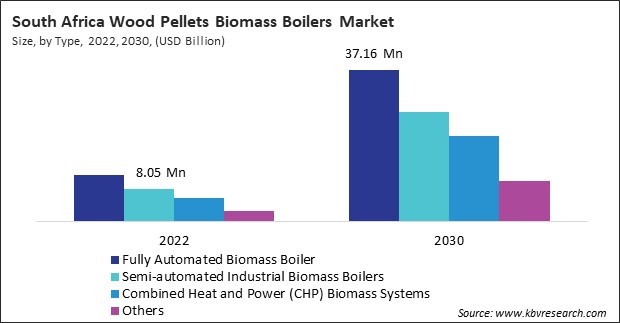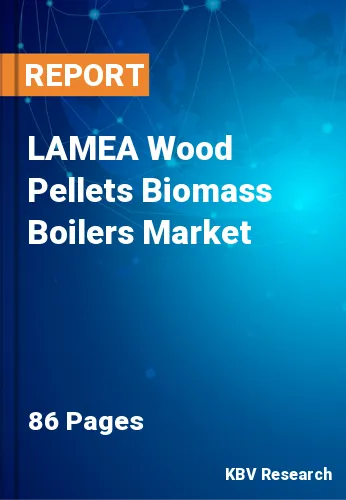The Latin America, Middle East and Africa Wood Pellets Biomass Boilers Market would witness market growth of 16.0% CAGR during the forecast period (2023-2030).
The Brazil market dominated the LAMEA Wood Pellets Biomass Boilers Market by Country in 2022, and would continue to be a dominant market till 2030; thereby, achieving a market value of $203.5 Million by 2030. The Argentina market is showcasing a CAGR of 16.9% during (2023 - 2030). Additionally, The UAE market would register a CAGR of 15.7% during (2023 - 2030).

Automated fuel feeding systems eliminate the need for manual loading of biomass fuel into the boiler, improving user convenience and safety. The design of these systems can accommodate an extensive range of biomass feedstocks, such as wood fragments, wood pellets, and agricultural residues. Automated fuel feeding systems typically consist of feed augers, conveyor belts, or pneumatic systems that transport biomass fuel from storage bins or silos to the combustion chamber of the boiler. Advanced control systems regulate the fuel feed rate based on heating demand, ensuring optimal combustion efficiency and energy savings.
Furthermore, advancements in emission control technologies, including electrostatic precipitators (ESP) and selective catalytic reduction (SCR), contribute to the mitigation of pollutants, including nitrogen oxides, particulate matter, and volatile organic compounds (VOCs). As a result, biomass boilers are increasingly recognized for their environmentally sustainable nature. Selective catalytic reduction (SCR) is an emission control technology commonly used to reduce nitrogen oxide (NOx) emissions from combustion processes, including those in biomass boilers. In these boilers, SCR systems typically inject a reductant agent, such as ammonia or urea, into the flue gas stream before it enters a catalyst chamber.
As per the data released in 2021 by the International Energy Agency, Brazil’s biomass and waste sector generated 8% (approximately 51,435 GWh) of total electricity generation in the country in 2021. As of 2020, approximately 92% of biomass and waste electricity generation was generated by primary solid biofuels, 4% by industrial waste, 3% by biogases, and 1% by liquid biofuels. Furthermore, according to information from the United Arab Emirates Embassy in Washington, Abu Dhabi has allocated over $20 billion towards renewable energy initiatives via Masdar. Over the past decade, this investment has resulted in a 400 percent expansion of the UAE's renewable energy portfolio. Thus, the growing biomass and renewable energy sectors in LAMEA is expected to propel the demand for these boilers in the region.
Free Valuable Insights: The Worldwide Wood Pellets Biomass Boilers Market is Projected to reach USD 11.4 Billion by 2030, at a CAGR of 13.9%
Based on Application, the market is segmented into Residential, and Commercial. Based on Type, the market is segmented into Fully Automated Biomass Boiler, Semi-automated Industrial Biomass Boilers, Combined Heat and Power (CHP) Biomass Systems, and Others. Based on countries, the market is segmented into Brazil, Argentina, UAE, Saudi Arabia, South Africa, Nigeria, and Rest of LAMEA.
By Application
By Type
By Country
Our team of dedicated experts can provide you with attractive expansion opportunities for your business.

